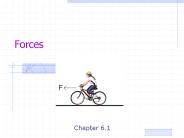FORCES - PowerPoint PPT Presentation
1 / 25
Title: FORCES
1
There are many forces acting on a bridge. We are
going to look at the four most basic
FORCES
Make sure that you complete the worksheet as you
go through the presentation.
2
Forces acting on a bridge.
Compression is a force that acts to compress or
shorten the thing it is acting on. Tension is a
force that acts to expand or lengthen the thing
it is acting on. Torsion is a force that acts
to twist something Shearing is a force that
causes material to tear or slide by each other
3
COMPRESSION
4
makes things bend
COMPRESSION
5
Here, you can see how the clay was distorted by -
COMPRESSION
6
COMPRESSION
7
Compression can distort shapes
compression
8
(No Transcript)
9
Too much compression can cause a bridge to fail.
10
TENSION
Is the opposite of compression
11
TENSION
pulls things apart.
12
Since they are not subject to compression, steel
cables are often used to withstand tension.
13
Cables withstanding tension in suspension bridges
.
14
The cables used to withstand tension can add an
interesting design to the bridge.
15
Sometimes both compression and tension can act on
the same part at the same time
WEIGHT
As pressure is applied to this beam, the top
half gets compressed while the bottom half gets
stretched.
16
The following slides will show how different
bridge designs deal with different forces.
17
(No Transcript)
18
(No Transcript)
19
(No Transcript)
20
(No Transcript)
21
(No Transcript)
22
Torsion Stress
- Causes materials to twist which can greatly
reduce strength - When bridge trusses twist they can easily fail
23
Torsion Stress in Action
Tacoma Narrows Bridge in high wind before it
collapsed (Click on below for movie)
Click Here
24
Shearing Stress
- Shear stress measures the largest shear force the
material can withstand before it rips apart.
25
The End































